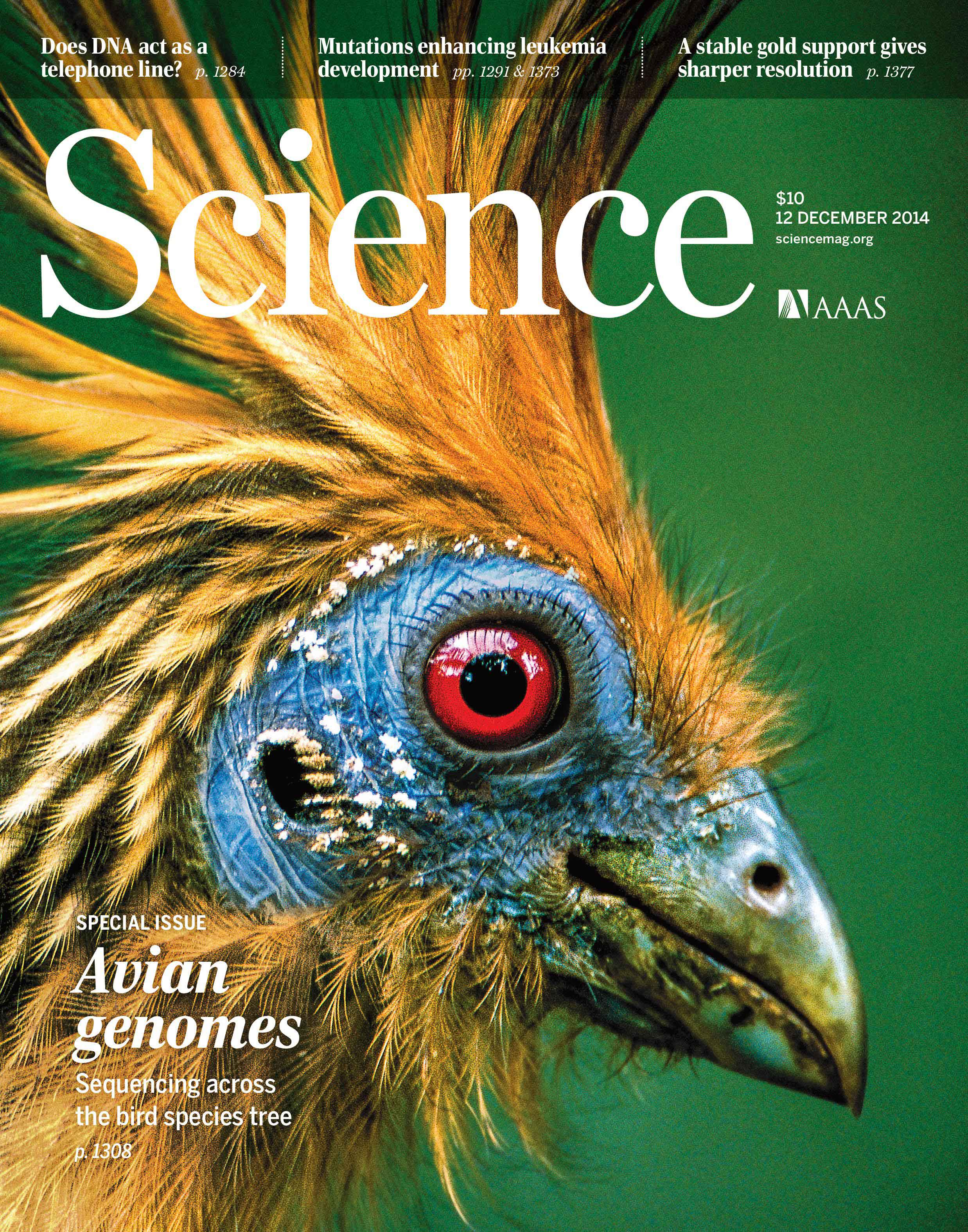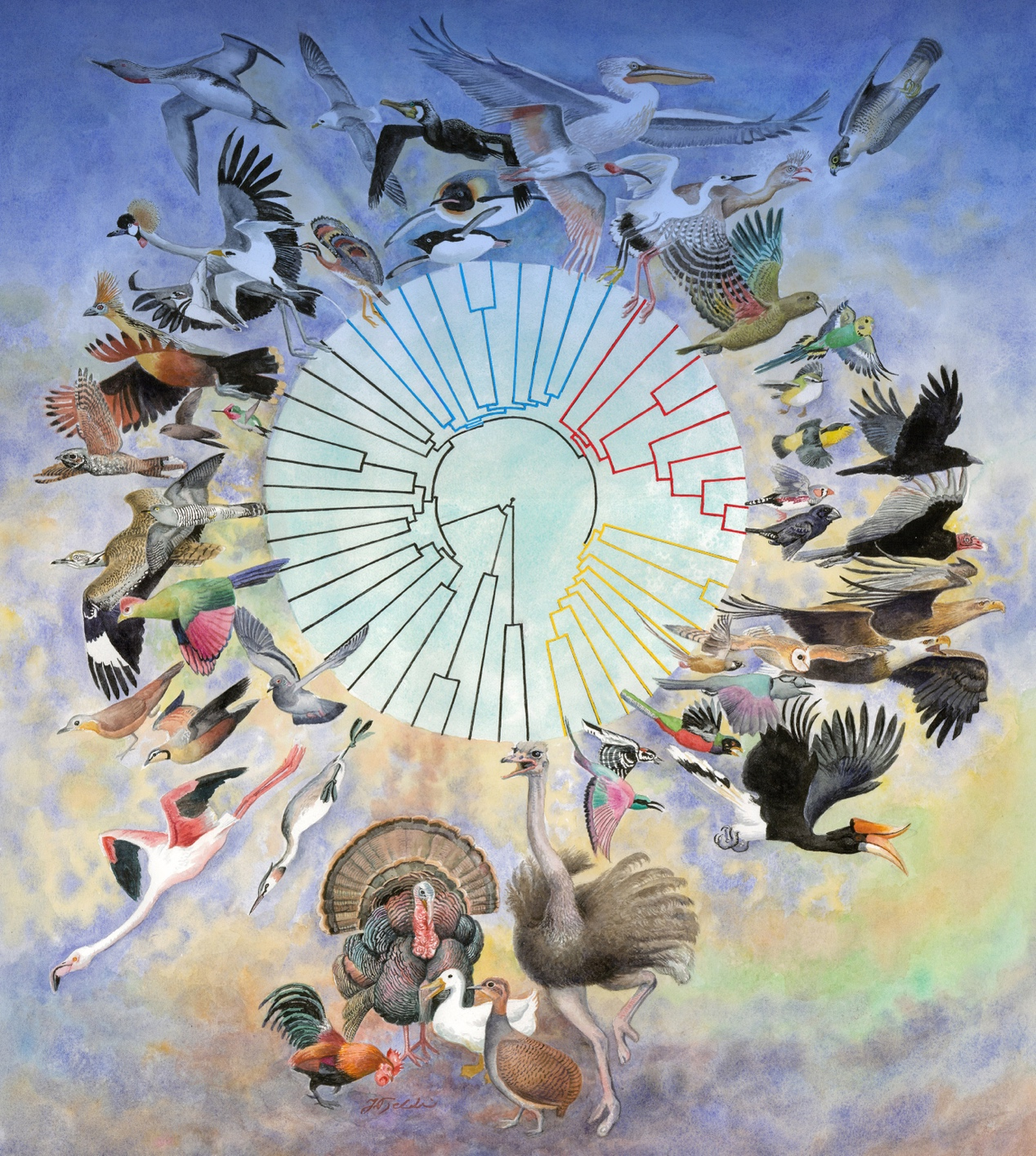As one the oldest surviving groups of animals, birds originated in the Jurassic period around 150 million years ago and are the only living descendants of dinosaurs. People have been studying birds for a long time, which inspired the development of human aviation and space exploration. Today, scientists are interested in fundamental questions about their origin, development, and evolution given their exceptionally long history on earth.
This journey into the world of birds – comprised of some 10,500 species – is an important undertaking with significant implications for our knowledge of their development.
Phase I – Genome-wide sequencing of 48 bird species
In December 2014, BGI-Research brought together more than 200 scientists from over 80 institutions and 20 countries, including the University of Copenhagen, Duke University, the University of Texas at Austin, the Smithsonian Museum, the Chinese Academy of Sciences, Louisiana State University, and many others, to complete a large-scale study of birds.
 The cover story in a special issue of Science (Volume 346 Issue 6215, 12 December 2014). (Image credit: Flip De Nooyer / Foto Natura / Minden Pictures / Corbis)
The cover story in a special issue of Science (Volume 346 Issue 6215, 12 December 2014). (Image credit: Flip De Nooyer / Foto Natura / Minden Pictures / Corbis)
The study sequenced, assembled, and compared full genomes of 48 species of modern birds, including crow, duck, falcon, parakeet, crane, ibis, woodpecker, and eagle, to attempt to answer the centuries-old question about the phylogenetic relationships between them. The findings from this inquiry were reported nearly simultaneously in 23 papers - eight papers in the December 12th special issue of Science and 15 more in Genome Biology, GigaScience, and other journals.
Whole genome sequencing of these various bird types told a different story about their phylogenetic relationships and challenged existing conclusions on the subject. Modern birds (Neoaves) did not evolve enough distinct genetic differences because they split into distinct species early on and rather quickly, making it difficult to clearly determine their initial branching order. This resulted in contradictions in the bird species tree, due to the limitations of partial DNA sequencing as well as anatomical and behavioral traits used in earlier studies.
Earlier research had speculated that the expansion of modern bird species occurred 10-80 million years before the Cretaceous-Paleogene extinction some 66 million years ago. However, genome-wide analyses suggest that this expansion occurred around the time of this mass extinction which left only a subset of surviving bird species.
The study found that birds have comparatively little DNA. Compared to other reptile genomes, avian genomes contain fewer repetitive DNA and lost thousands of genes in their early evolution after they split from other reptiles. The lost genes have important functions in humans, such as maintaining the reproductive system, skeleton formation, and lung systems. It’s common to think that during the process of evolution, new genetic material is an indispensable condition for the emergence of new phenotypes. However, for birds less is more – they provide compelling evidence that the loss of genes can sometimes trigger the development of new, distinct phenotypes.
 A reconstruction of the avian family tree, based on whole genome sequences of 48 bird species from 34 orders. (Painting by Jon Fjeldså)
A reconstruction of the avian family tree, based on whole genome sequences of 48 bird species from 34 orders. (Painting by Jon Fjeldså)
The BGI-Research-led project also studied the genes related to several unique traits of birds, such as song learning in songbirds. Scientists have found that the specialized song-learning brain circuitry of vocal-learning birds (i.e. parrots and hummingbirds) and human brain speech regions have convergences in the activity of more than 50 genes. Parrots, for example, have a song system within a song system, which is unique to them, and may might explain their greater ability to imitate human speech.
In addition, this milestone research analyzed genes related to flight, feathers, vision, diet, reproduction, and viruses within the bird genome, which deepened the existing understanding of the molecular mechanism of bird genome evolution as well as its biodiversity.
Phase II – New methods enable fresh discoveries
The journey to better understand birds has continued apace with a variety of new projects now being carried out on a much bigger scale.
On November 12, 2020, BGI-Research partnered with the Kunming Institute of Zoology and other institutions to publish two cover articles in Nature on the latest results of bird genome research.
 The cover story in Nature (Volume 587 Issue 7833, 12 November 2020). (Image credit: SciStories)
The cover story in Nature (Volume 587 Issue 7833, 12 November 2020). (Image credit: SciStories)
The research team presented the genome dataset of 363 species covering 92.4% of bird families - including 267 newly sequenced genomes – using a newly established method for multi-genome comparison and analysis without the need for reference sequences.
This new method, a reference-free whole-genome aligner called Cactus, produced a substantially more-complete alignment than the commonly used reference-based approach, and was able to unlock a greater proportion of orthologous sequences. For example, the amount of data from the whole genome sequencing reached 981 Mb, a 149% increase compared with the 48-bird genome study.
 Scientists have sequenced and recorded the genomes of species from almost every branch of the bird family tree. (Visualization by Feng et al. / NATURE 2020; Illustrations by Jon Fjeldså)
Scientists have sequenced and recorded the genomes of species from almost every branch of the bird family tree. (Visualization by Feng et al. / NATURE 2020; Illustrations by Jon Fjeldså)
With Cactus, the research team established an ancestral genome for each evolutionary node to determine both shared and lineage-specific genomic diversity, advancing the understanding of the dynamics of bird evolution.
From one to many
The study of birds has been of great value to the human understanding of evolution, being the most species-rich class among terrestrial vertebrates and living in most terrestrial and shallow-water environments in the world. They are also important research models for population genetics, neurobiology, animal development, and conservation biology.
On June 4, 2015, an international consortium led by BGI-Research, Copenhagen University, and Duke University announced the official launch of the "The Bird 10,000 Genome Project" (B10K), aiming to develop genome maps of the 10,500 living bird species, digitally reconstruct the bird family tree, and present the evolutionary history of all living bird populations, among other goals.

The 2014 special issue of Science and the 2020 cover articles in Nature mentioned above reflect the accomplishments of the first and second phases of the B10K Project.
The study of birds has helped the scientific community realize that understanding the genetic makeup and evolution of species is key to the protection and utilization of biodiversity resources. Using genomics technologies, scientists today have the opportunity to decode the genomes of all existing species, to advance human knowledge in fundamental areas related to the evolution of life and the formation of biodiversity
Greater global collaboration
In 2017, scientists from China, the United States, the United Kingdom, and other countries jointly launched the "Earth BioGenome Project" (EBP), bringing together experience from various fields to sequence, catalog, and characterize the genomes of all the planet’s eukaryotic biodiversity over a period of ten years. The Project will also interpret the systems of life on earth, with important implications for the understanding, protection, and utilization of biodiversity. EBP now has confirmed participation by 45 institutions, with 49 affiliated projects in 22 countries across all continents except Antarctica.

This is currently the largest life science research project in the world, and it will give the scientific community and broader society a deeper understanding of the organisms that exist through the lens of genomics.
As one of the initiators of the EBP, BGI has participated in several affiliated projects with meaningful outcomes. In 2021, BGI-Research completed the genome sequencing and assembly of more than 1,000 species and published the results in multiple academic journals, including Nature, Nature Communications, PNAS, Molecular Plant, and Science Bulletin.
Human beings are still some way from grasping the full breadth of the natural world, but with more global collaboration between scientific institutions such as BGI-Research, we have never been closer.
Source:
International Team Maps "Big Bang" of Bird Evolution
Dense sampling of bird diversity increases power of comparative genomics
Earth BioGenome Project (EBP)



